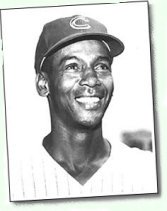February 2002
Complex Simulation
By Michael J. Katin, MD
By the time you read this, Super Bowl XXXVI will have passed into history. Several months ago it was thought that a major event such as this might become impractical due to the risk of terrorist activity and the nightmare of security precautions that would need to be implemented. One plan was to close the event to the public and just televise it, and the next logical move was to eliminate the players altogether and put together a simulated game based on the performances of the teams over the past season, using technology that has already been used in movies for years, from Jurassic Park to Dude, Where's My Car?
This approach is not unprecedented. Over 20 years ago, entrepeneurs marketed a title fight between Rocky Marciano and Muhammad Ali by filming them in a series of boxing encounters and then splicing the scenes together to match a computer projection of what would actually have happened if they had met in their primes. I think it did fine financially but plans for a rematch were derailed when Rocky was killed in a plane crash shortly thereafter. The only rematch he would have benefitted from would have been with gravity.
Now if this approach can be considered for sporting events, why can't it be used in Radiation Oncology? Patients are becoming more knowledgeable about details of treatment, and they might be very happy to know that instead of being seen by the best radiation oncologist that particular center could hire with a non-competitive salary package, someone with probably more baggage than a Wells Fargo stagecoach, they could be treated by Leonard Gunderson, James Cox, or Jay Harris? All that would be required would be for the techniques and outcomes of each superstar to be programmed into a virtual radiation oncologist. Maybe it could even be done for that icon's best years, just as computerized football and baseball games can elect to use the Pittsburgh Steelers of 1978 or the New York Yankees of 1927.
This would have multiple advantages. Simulation time could be reduced since the field set-ups would be already established and not left up to an individual's whim of that particular day. Outcomes, or at least their odds, could be told to the patients even before treatments are started. If Hank Aaron hit .355 in 1959 and his parameters were accurately put into the program, he should hit .355 over an equivalent virtual season. Similarly, a virtual C.C. Wang would be able to guarantee a 79% chance of producing local control by treating a T2 base of tongue carcinoma.
There are other intriguing spin-offs from this. There is a shortage of radiation oncologists, and perhaps if done properly some centers could be run by the by the RTT's (unfortunately, also in short supply) and nurses plus the virtual radiation oncologists. It would also be interesting to try to introduce new developments in treatment to the styles of the greats. How many more wins would Gaylord Perry have had with today's relief pitchers coming in for the final two innings? How many more RBIs would Ernie Banks have had playing with the 1970s Dodgers? How many yards would Walter Payton have gotten per year playing behind the offensive line of the St. Louis Rams? How many more saves would Gilbert Fletcher have gotten with IMRT?
And finally, if drops in reimbursement and spread of capitation contracts make it totally unrealistic to run a radiation oncology center, it would be possible to go to the next level...the virtual patient.
Special Note: To those people awaiting the feature on "10 Things You Can Do With Used Bolus Material", this will not be printed this month. The final total was, in fact, 11 things, 3 of which were determined not to be suitable for publication on a web site accessible to those under 18 years of age. The remaining 8 have been optioned to Martha Stewart Living, pending a final verification that a technique to reliably remove hairs from the bolus material has been perfected.
email: mkatin@radiotherapy.com
